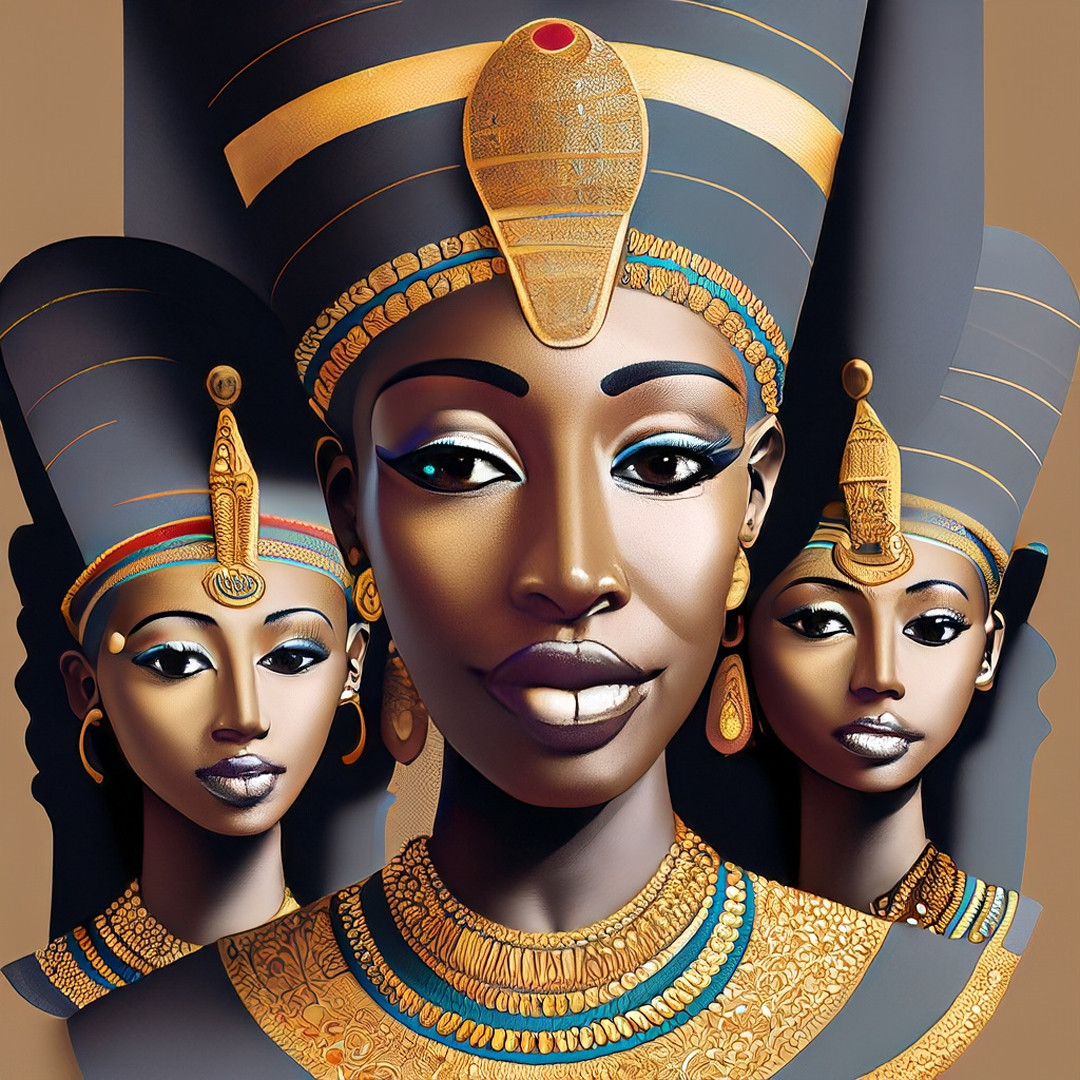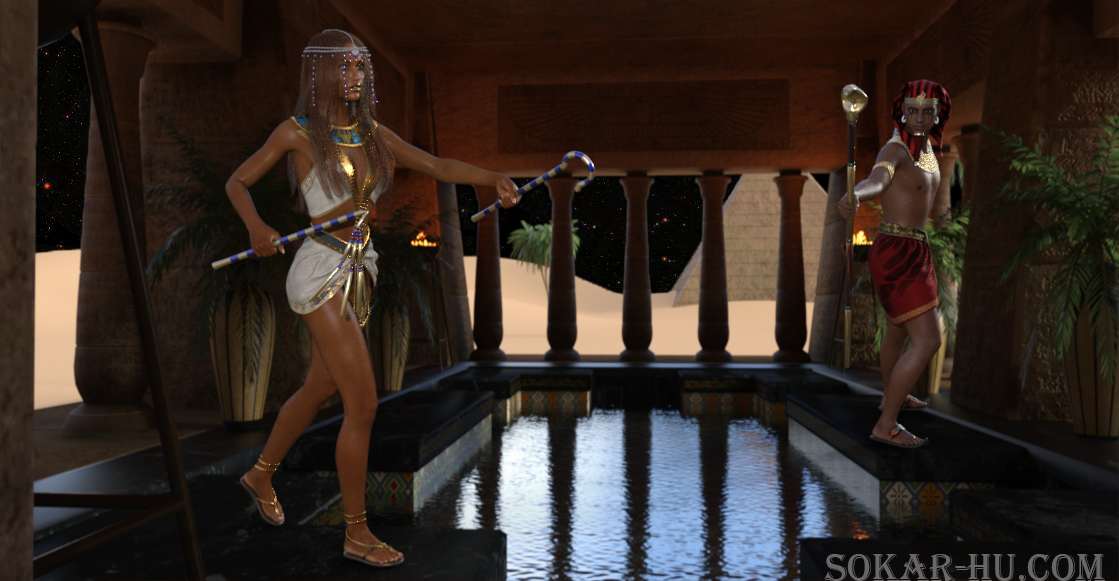Queen Nefertiti: The Power, Beauty, and Mystery of Egypt’s Forgotten Pharaoh
Queen Nefertiti, the Icon Who Ruled Beside—and Possibly After—Akhenaten

Few names from ancient history stir the imagination quite like Queen Nefertiti. Her face, immortalized in the famous painted bust discovered in Amarna, is one of the most iconic images of ancient Egypt. With her high cheekbones, regal gaze, and distinctive blue crown, she has come to symbolize beauty, elegance, and power.
But Nefertiti was far more than a beautiful queen. She was a revolutionary, a religious leader, and quite possibly one of the most powerful women ever to rule Egypt—not just beside a pharaoh, but as one herself.
The Rise of a Queen
Nefertiti’s name means “The Beautiful One Has Come,” and while her exact origins are still debated, some scholars believe she may have been the daughter of Ay, a top advisor who would later become pharaoh himself. Others suggest she may have been of foreign birth, perhaps connected to Mitanni royalty.
What we do know is that she married Amenhotep IV, a young pharaoh of the 18th Dynasty who would soon rename himself Akhenaten—and lead one of the boldest religious revolutions in Egyptian history.
Co-Ruler of a New Order
Nefertiti didn’t just stand at Akhenaten’s side—she helped lead a spiritual and political transformation. Together, they abandoned the traditional Egyptian pantheon and elevated the Aten, the sun disk, as the sole god worthy of worship.
In this new monotheistic vision, Akhenaten and Nefertiti became the earthly mediators between the people and the divine sun. It was a radical shift—and Nefertiti was at the center of it.
☀️ Art from the time shows her worshipping Aten alone, smiting enemies in the manner of pharaohs, and appearing in equal size and power to her husband. This was unheard of in Egyptian art, where queens were usually depicted as secondary figures.
The Queen in the Spotlight
Nefertiti shattered royal norms:
-
She was depicted in scenes of battle, offering sacrifices, and participating in state rituals.
-
Her images show her driving chariots, wearing the blue crown (a pharaonic symbol), and receiving the rays of Aten as a divine figure.
-
She was often called “The Mistress of Upper and Lower Egypt,” a title typically reserved for reigning monarchs.
Her visibility in public life was exceptional for a queen in ancient Egypt—and may signal a co-regency with Akhenaten, or even an elevation to full pharaoh status later in life.
Six Daughters—and Possibly a Son?
Nefertiti and Akhenaten had six daughters, many of whom were involved in diplomatic marriages and temple rituals. There’s still debate over whether Nefertiti was the mother of Tutankhamun—the famous “boy king” who reversed his father's religious reforms—or if that role belonged to another wife of Akhenaten, possibly Kiya.
Some scholars believe that after Akhenaten’s death, Nefertiti may have ruled Egypt under the name Neferneferuaten, a short-lived pharaoh whose gender and identity remain murky. Others suggest she faded from public life before her husband’s death.
Disappearance and Mystery
Around Year 12 of Akhenaten’s 17-year reign, Nefertiti vanishes from the historical record. There’s no firm evidence of her death, burial, or even her final years. This silence has fueled centuries of speculation:
-
Did she die unexpectedly, leading to political chaos?
-
Did she assume the throne under a new name?
-
Was she erased in the backlash that followed Akhenaten’s controversial reforms?
🏺 Her tomb has never been conclusively found, though some believe her remains may lie in a sealed chamber near Tutankhamun’s tomb in the Valley of the Kings—awaiting discovery.
Legacy and Rediscovery
Nefertiti might have been forgotten by the pharaohs who came after her, but history had other plans.
In 1912, German archaeologist Ludwig Borchardt unearthed her stunning bust in the ruins of Amarna, Akhenaten’s abandoned capital. The artwork’s grace and realism stunned the world—and Nefertiti was reborn as an icon of Egyptian allure.
Her image has since inspired:
-
Paintings, sculptures, and fashion collections
-
Documentaries and novels
-
Feminist and pan-African movements celebrating ancient female power
🎨 The bust now resides in the Neues Museum in Berlin, despite calls from Egypt to return her. It remains one of the most visited and photographed artifacts in the world.
Final Thoughts: More Than a Pretty Face
Queen Nefertiti was not just the face of an empire—she was its soul, its reformer, its spiritual high priestess, and possibly its ruler. Her life straddled the divine and the political, the artistic and the revolutionary.
To this day, she remains one of history’s greatest enigmas: a woman who ruled like a god, vanished like a myth, and reappeared as a legend.
The Royal Circus: Queen Nefertiti and Her Playful Princesses

Queen Nefertiti, renowned for her beauty and grace, was not only a powerful queen of ancient Egypt but also a loving mother to her daughters. Behind the regal façade, Nefertiti and her princesses shared moments of joy, laughter, and mischievous adventures that painted the royal palace as a vibrant and amusing circus. Join us as we delve into the delightful world of Queen Nefertiti and her playful daughters, where life in the royal court was far from solemn.
The Royal Dress-Up Extravaganza:
In the palace of Queen Nefertiti, dress-up time was an event filled with laughter and creativity. The queen and her daughters, Meritaten, Meketaten, Ankhesenpaaten, and Neferneferuaten Tasherit, would don vibrant and extravagant outfits, donning headdresses adorned with feathers, jewels, and flowers. The royal quartet would parade through the halls, imitating the walks of sacred animals, much to the amusement of the palace staff.
Charades with a Royal Twist:
Even queens and princesses enjoy a good game of charades! Nefertiti and her daughters would gather in the grand hall, taking turns acting out historical figures, deities, or animals. The pharaoh, Akhenaten, would often join in the fun, his exaggerated gestures causing fits of laughter among the participants. These entertaining evenings not only fostered creativity and wit but also brought the royal family closer together.
Pranks Fit for a Queen:
Nefertiti, with her playful spirit, occasionally orchestrated elaborate pranks in the palace, much to the delight of her daughters. One memorable incident involved the queen secretly replacing the palace guards' helmets with oversized ostrich feathers. The bewildered guards stood tall, trying to maintain their composure while the princesses stifled their laughter behind nearby pillars. The palace buzzed with excitement as the pranksters reveled in their successful mischief.
Grand Puppet Shows:
To entertain her daughters, Queen Nefertiti organized grand puppet shows, transforming the royal court into a captivating theater. The princesses eagerly watched as beautifully crafted puppets, depicting mythological creatures and famous personalities, came to life. Nefertiti, with her exceptional storytelling skills, narrated tales of adventure, love, and intrigue, captivating her daughters' imaginations and leaving them yearning for more.
Enchanting Dance Parties:
Music and dance were an integral part of life in the royal court, and Nefertiti encouraged her daughters' love for movement and rhythm. The queen, renowned for her graceful dance skills, would teach her princesses the art of Egyptian dance. The palace would come alive with infectious music as the royal family twirled and swayed, embracing the joy of each spirited dance party. The reverberating laughter and flowing movements created a bond of unity and happiness.
Beyond the glamour and majesty of the royal court, Queen Nefertiti and her daughters shared precious moments of laughter, creativity, and playfulness. Through dress-up extravaganzas, hilarious charades, pranks, puppet shows, and enchanting dance parties, the palace was transformed into a captivating circus. These endearing and amusing episodes remind us that even the most revered figures in history embraced the joy and innocence of familial connections. The legacy of Queen Nefertiti and her playful daughters lives on, inspiring us to celebrate the lighthearted moments and treasure the bonds of love and laughter within our own families.
Queen Nefertiti

Pharaoh Akhenaten married Queen Nefertiti in 1353 BCE
Queen Nefertiti was one of the most powerful and influential queens of ancient Egypt, who lived during the 14th century BCE. She was the wife of Pharaoh Akhenaten, and they ruled together during a time of great change and upheaval in Egypt.
Nefertiti was renowned for her beauty, intelligence, and strength. She was depicted in art as having a long, graceful neck, large, almond-shaped eyes, and a serene, regal expression. She was also a skilled diplomat, and played an important role in shaping her husband's policies and religious reforms.
During Akhenaten's reign, Nefertiti became a powerful figure in her own right, and was often depicted alongside her husband in royal art and inscriptions. She was the mother of six daughters, and was likely involved in the education and upbringing of her children.
Nefertiti was also known for her patronage of the arts, and was a great supporter of the Amarna style of art and architecture that flourished during her husband's reign. She commissioned many works of art, including statues, reliefs, and jewelry, that reflected her own beauty and the ideals of her husband's religious reforms.
Despite her many accomplishments, Nefertiti's life remains shrouded in mystery. There is little known about her childhood or her family background, and there are few written records that document her life and achievements.
One of the most famous depictions of Nefertiti is the bust that was discovered in the workshop of the sculptor Thutmose in 1912. The bust is considered one of the greatest works of ancient Egyptian art, and has become an icon of beauty and grace.
Nefertiti's reign came to an end with the death of her husband, Pharaoh Akhenaten. It is unclear what happened to her after his death, but some historians believe that she may have ruled as a pharaoh in her own right for a short time, before disappearing from history.
Despite the mysteries surrounding her life, Queen Nefertiti remains one of the most beloved and admired figures of ancient Egypt, and her beauty and power continue to inspire awe and fascination to this day.


